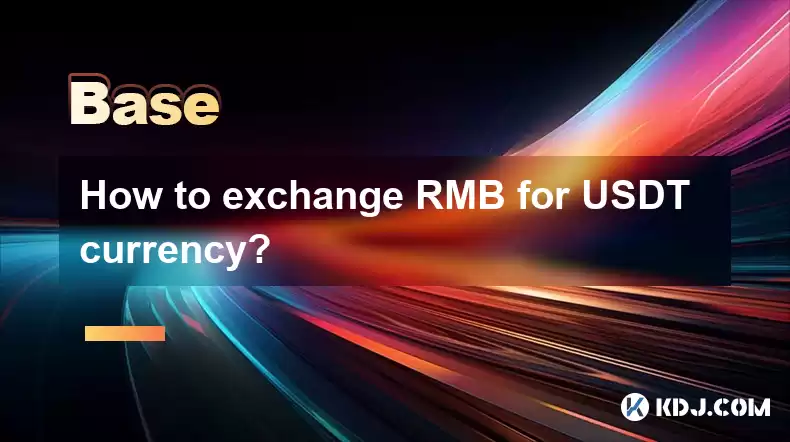-
 Bitcoin
Bitcoin $114500
-0.31% -
 Ethereum
Ethereum $3648
1.11% -
 XRP
XRP $3.033
-0.27% -
 Tether USDt
Tether USDt $0.9999
-0.01% -
 BNB
BNB $758.5
-0.32% -
 Solana
Solana $167.5
1.48% -
 USDC
USDC $0.9998
-0.02% -
 TRON
TRON $0.3331
0.74% -
 Dogecoin
Dogecoin $0.2039
0.25% -
 Cardano
Cardano $0.7419
-0.46% -
 Hyperliquid
Hyperliquid $39.21
2.66% -
 Stellar
Stellar $0.4049
-1.95% -
 Sui
Sui $3.483
-0.56% -
 Bitcoin Cash
Bitcoin Cash $570.8
2.89% -
 Chainlink
Chainlink $16.67
-0.57% -
 Hedera
Hedera $0.2470
-1.57% -
 Ethena USDe
Ethena USDe $1.001
0.00% -
 Avalanche
Avalanche $22.36
1.52% -
 Litecoin
Litecoin $123.4
4.35% -
 UNUS SED LEO
UNUS SED LEO $8.989
0.09% -
 Toncoin
Toncoin $3.324
-2.40% -
 Shiba Inu
Shiba Inu $0.00001219
-1.30% -
 Uniswap
Uniswap $9.811
2.54% -
 Polkadot
Polkadot $3.662
-0.07% -
 Monero
Monero $295.5
-3.85% -
 Dai
Dai $1.000
0.01% -
 Bitget Token
Bitget Token $4.345
0.24% -
 Cronos
Cronos $0.1380
0.95% -
 Pepe
Pepe $0.00001044
-1.14% -
 Ethena
Ethena $0.5981
-4.24%
How to exchange RMB for USDT currency?
By choosing the appropriate method, you can exchange RMB for USDT securely and efficiently, meeting your unique needs for flexibility, fees, and risk tolerance.
Jan 23, 2025 at 06:54 pm

How to exchange RMB for USDT currency?
Key Points
- Understand the different methods of exchanging RMB for USDT.
- Compare the fees and exchange rates of different platforms.
- Choose the method that best suits your needs.
- Follow the step-by-step instructions to exchange RMB for USDT.
- Be aware of the risks and precautions associated with exchanging cryptocurrencies.
Methods of Exchanging RMB for USDT
1. Peer-to-Peer (P2P) Trading Platforms
P2P platforms connect buyers and sellers directly, allowing them to trade cryptocurrencies without the need for an intermediary. This method offers greater flexibility and often lower fees than centralized exchanges. However, it requires more manual effort and may involve higher counterparty risk.
- Step 1: Register on a reputable P2P platform such as Binance, Huobi, or OKX.
- Step 2: Verify your identity by providing government-issued identification and other required documents.
- Step 3: Find a seller who meets your requirements for exchange rate, payment method, and transaction volume.
- Step 4: Initiate a trade and provide the seller with your USDT wallet address.
- Step 5: Transfer the agreed amount of RMB to the seller's bank account or other specified payment method.
- Step 6: Once the seller confirms the receipt of the payment, the USDT will be released into your wallet.
2. Centralized Exchanges
Centralized exchanges act as intermediaries between buyers and sellers, providing a secure platform for trading cryptocurrencies. They offer a wide range of features and trading pairs, but typically charge higher fees than P2P platforms.
- Step 1: Create an account on a centralized exchange such as Binance, Coinbase, or Kraken.
- Step 2: Complete the required identity verification procedures.
- Step 3: Deposit RMB into your exchange account via wire transfer, credit/debit card, or other supported payment methods.
- Step 4: Navigate to the USDT trading pair page.
- Step 5: Enter the amount of RMB you want to exchange and the current market rate.
- Step 6: Place a buy order and wait for it to be filled.
- Step 7: The USDT will be credited to your exchange wallet upon execution of the trade.
3. Over-the-Counter (OTC) Trading
OTC trading involves trading large volumes of cryptocurrencies directly with other market participants, typically through brokers or specialized platforms. This method provides high liquidity and tailored solutions for high-net-worth individuals and institutions, but it can also carry higher fees and risks.
- Step 1: Contact an OTC broker or platform.
- Step 2: Negotiate the exchange rate, payment terms, and settlement instructions.
- Step 3: Transfer the RMB to the specified bank account.
- Step 4: Receive the agreed amount of USDT in a designated wallet.
4. Physical Trading
Physical trading involves the exchange of physical cash for cryptocurrencies, typically through local meetups or private gatherings. This method offers the highest level of privacy and anonymity, but it comes with significant security risks and is not recommended for beginners.
- Step 1: Find a reputable individual or group who organizes physical trading events.
- Step 2: Arrange a secure meeting location and time.
- Step 3: Verify the identity of the counterparty and inspect the authenticity of the physical cash.
- Step 4: Exchange the cash for the agreed amount of USDT and transfer it to your wallet.
FAQs
Q: Which method of exchanging RMB for USDT is the best?
A: The best method depends on your specific needs and preferences. If you prioritize low fees and flexibility, P2P trading can be a good choice. If you seek a more secure and user-friendly experience, centralized exchanges offer a convenient option. OTC trading is suitable for high-volume transactions with tailored solutions. Physical trading offers privacy but requires heightened security measures.
Q: What are the fees associated with exchanging RMB for USDT?
A: The fees vary across different platforms and methods. P2P platforms usually charge a small transaction fee, while centralized exchanges may impose trading fees, deposit fees, and withdrawal fees. OTC trading fees are typically negotiated with the broker or platform. Physical trading may involve security or facilitation fees depending on the arrangement.
Q: Is it legal to exchange RMB for USDT?
A: The legal status of cryptocurrency exchanges varies by jurisdiction. In some countries, it is legal to exchange RMB for USDT, while in others it is restricted or prohibited. It is important to research the legal framework in your country before engaging in cryptocurrency transactions.
Q: What are the risks of exchanging RMB for USDT?
A: Cryptocurrency markets can be volatile, and there is a risk of losing funds due to price fluctuations. It is crucial to understand the risks involved and trade responsibly. Additionally,
Disclaimer:info@kdj.com
The information provided is not trading advice. kdj.com does not assume any responsibility for any investments made based on the information provided in this article. Cryptocurrencies are highly volatile and it is highly recommended that you invest with caution after thorough research!
If you believe that the content used on this website infringes your copyright, please contact us immediately (info@kdj.com) and we will delete it promptly.
- Meme Coins Skyrocket: Is Dogecoin About to Be Dethroned?
- 2025-08-06 03:50:13
- Tether's On-Chain Surge: USDT Dominates and Drives Blockchain Fees
- 2025-08-06 02:50:13
- Bitcoin, Treasury, Country: Bolivia Follows El Salvador's Lead, While TON Strategy Co. Makes Waves
- 2025-08-06 03:50:13
- Succinct's PROVE Token & Mainnet Launch: A New Era for ZK Proofs
- 2025-08-06 02:50:13
- CEA Industries Rebrands as BNB Network Company: A New Era for BNB Treasury
- 2025-08-06 03:55:14
- Terra Classic's Market Module Revival: The v3.5.0 Upgrade and What It Means for LUNC
- 2025-08-06 02:30:12
Related knowledge

What is the difference between CeFi and DeFi?
Jul 22,2025 at 12:28am
Understanding CeFi and DeFiIn the world of cryptocurrency, CeFi (Centralized Finance) and DeFi (Decentralized Finance) represent two distinct financia...

How to qualify for potential crypto airdrops?
Jul 23,2025 at 06:49am
Understanding What Crypto Airdrops AreCrypto airdrops refer to the distribution of free tokens or coins to a large number of wallet addresses, often u...

What is a crypto "airdrop farmer"?
Jul 24,2025 at 10:22pm
Understanding the Role of a Crypto 'Airdrop Farmer'A crypto 'airdrop farmer' refers to an individual who actively participates in cryptocurrency airdr...

What is the difference between a sidechain and a Layer 2?
Jul 20,2025 at 11:35pm
Understanding the Concept of SidechainsA sidechain is a separate blockchain that runs parallel to the main blockchain, typically the mainnet of a cryp...

What is the Inter-Blockchain Communication Protocol (IBC)?
Jul 19,2025 at 10:43am
Understanding the Inter-Blockchain Communication Protocol (IBC)The Inter-Blockchain Communication Protocol (IBC) is a cross-chain communication protoc...

How does sharding improve scalability?
Jul 20,2025 at 01:21am
Understanding Sharding in BlockchainSharding is a database partitioning technique that is increasingly being adopted in blockchain technology to enhan...

What is the difference between CeFi and DeFi?
Jul 22,2025 at 12:28am
Understanding CeFi and DeFiIn the world of cryptocurrency, CeFi (Centralized Finance) and DeFi (Decentralized Finance) represent two distinct financia...

How to qualify for potential crypto airdrops?
Jul 23,2025 at 06:49am
Understanding What Crypto Airdrops AreCrypto airdrops refer to the distribution of free tokens or coins to a large number of wallet addresses, often u...

What is a crypto "airdrop farmer"?
Jul 24,2025 at 10:22pm
Understanding the Role of a Crypto 'Airdrop Farmer'A crypto 'airdrop farmer' refers to an individual who actively participates in cryptocurrency airdr...

What is the difference between a sidechain and a Layer 2?
Jul 20,2025 at 11:35pm
Understanding the Concept of SidechainsA sidechain is a separate blockchain that runs parallel to the main blockchain, typically the mainnet of a cryp...

What is the Inter-Blockchain Communication Protocol (IBC)?
Jul 19,2025 at 10:43am
Understanding the Inter-Blockchain Communication Protocol (IBC)The Inter-Blockchain Communication Protocol (IBC) is a cross-chain communication protoc...

How does sharding improve scalability?
Jul 20,2025 at 01:21am
Understanding Sharding in BlockchainSharding is a database partitioning technique that is increasingly being adopted in blockchain technology to enhan...
See all articles

























































































